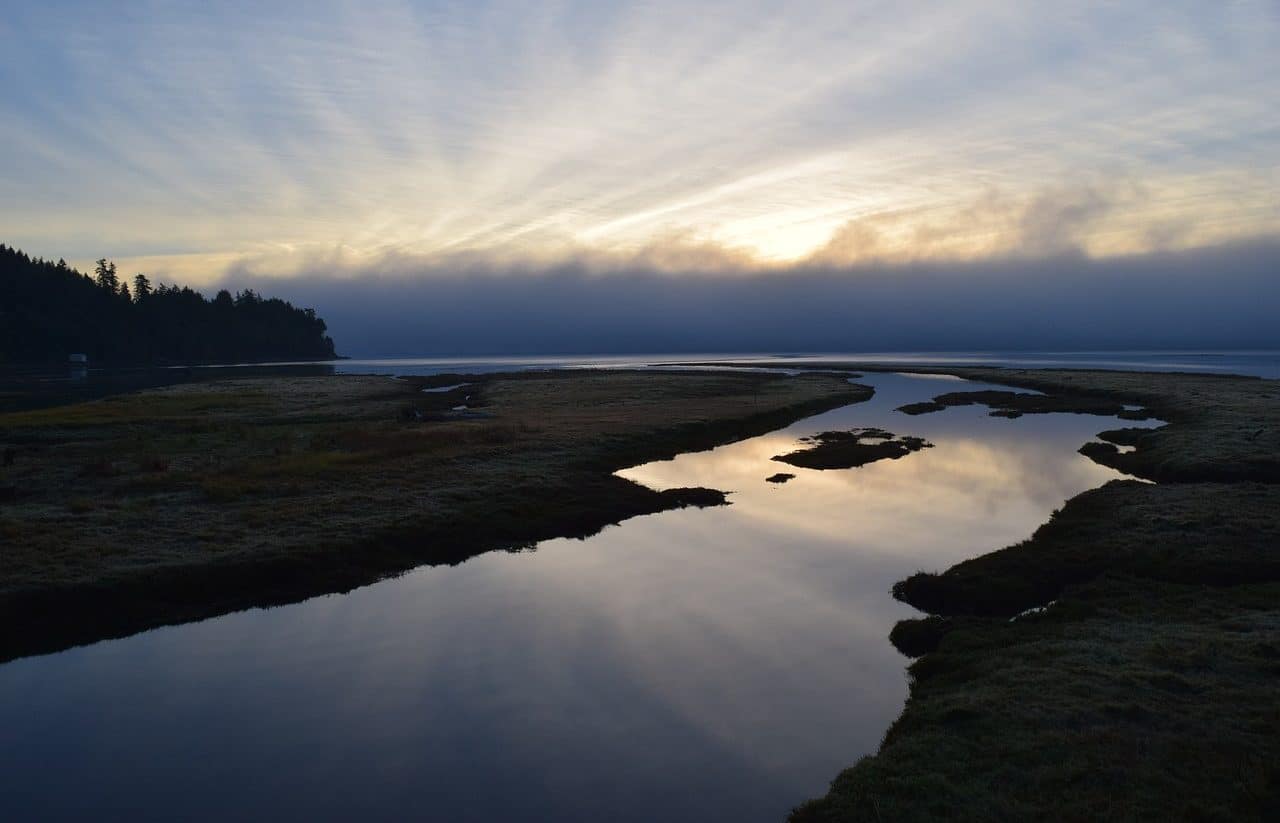
An estuary is where a high-flow watercourse flows into the ocean.
An estuary is the region where a high-flow watercourse empties into the ocean. It is usually composed of a single arm of great depth and has a shape similar to a funnel, with sides that move away in the same direction as the current .
It is common for estuaries - from the Latin aestuarĭum - to have beaches on their sides and, when the waters recede, to display plants that grow in salt water. It should be noted that, in general, the estuary is found in areas with large tidal amplitudes.
The origin of an estuary is linked to the influence exerted by the tides on the meeting of river and sea waters. During high tide , seawater enters the estuary and acts as a retention for the water coming from the river; At low tide , however, all the water enters the ocean with great force, something that results in a deepening of the channel.
Estuaries around the world
The amplitude of the tides and the sediments carried by the rivers determine the creation of estuaries. The largest tides are recorded on the east coast of Canada and in the northwest of France , which allows the development of infrastructure for the generation of electrical energy .
In the equatorial region, on the other hand, estuaries are rare due to the high level of sediment transported by the rivers and the low tidal range. In these cases, it is common for the mouth of the river to generate a delta instead of an estuary.
An example of an estuary is the mouth of the Río de la Plata in the Atlantic Ocean , on the border between Uruguay and Argentina .

Estuaries have great relevance for ecology.
The ecological importance
The estuary is a refuge and a source of food for many species of the animal and plant kingdom . It supports both species that reside in that place and others that are passing through; It also provides a natural barrier against storms, so many animals can go to shelter until the storms move, without being in danger. Its wall system also controls flooding and includes protected systems such as mangroves, wetlands and seagrass meadows.
On the other hand, sea water , when it meets river water, loses a large percentage of salinity, becoming more suitable to host the life of thousands of species; Furthermore, as it is semi-enclosed by continental edges and at the same time is connected to the ocean, it is water that is always renewed and, when moved, allows the diversification of species from one point to another on the coast . It is also worth mentioning that it offers an ideal temperature for the proliferation of life.
In these spaces biological productivity is very high, a great variety of fish and mollusks are concentrated. It is also worth mentioning that in some estuaries, such as those located in Chile , there are natural banks of Mytilus chilensis and Choromytilus chorus : these are immense spaces where populations of these species nest.
Unfortunately, human beings use resources as they see fit and do not ask questions such as the necessary time that must pass for them to recover. However, it is important to keep in mind that estuaries offer many advantages and could be an ideal womb for the repopulation of certain species that have been decimated in other places. It is necessary to know its cycles and understand what precautions must be taken before exploiting this renewable natural resource .
